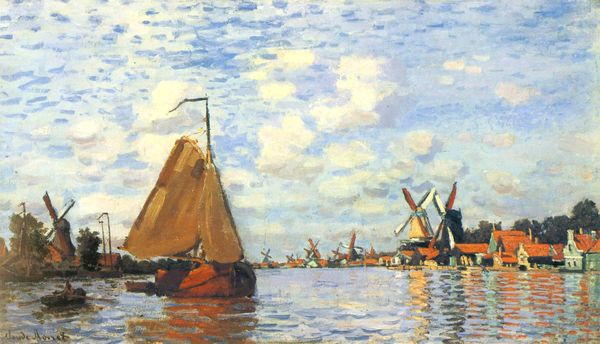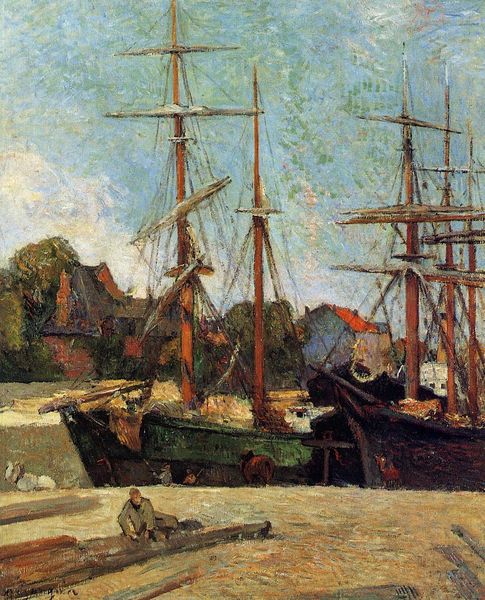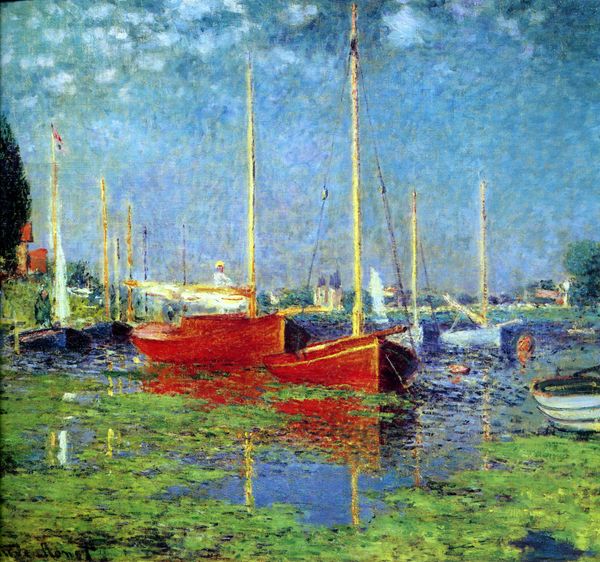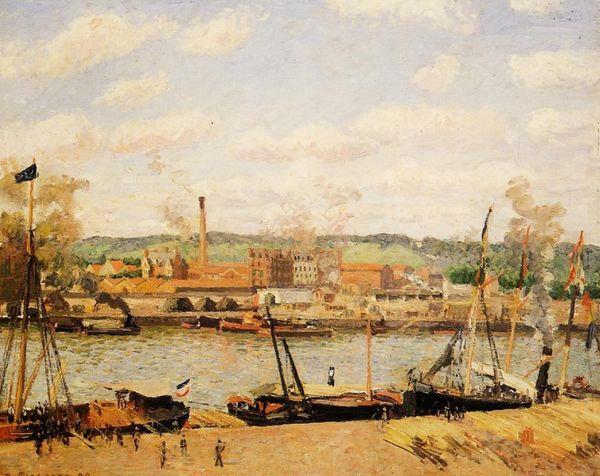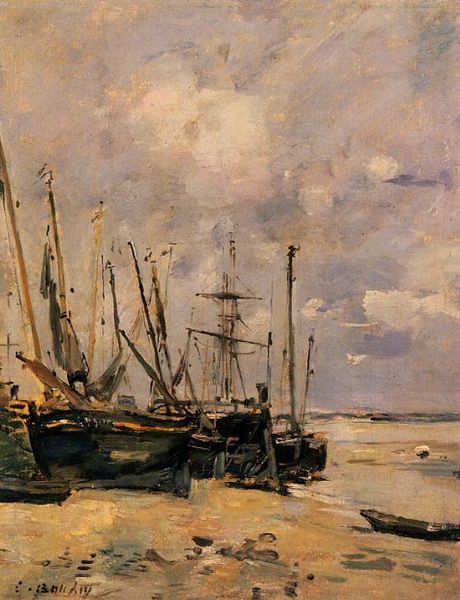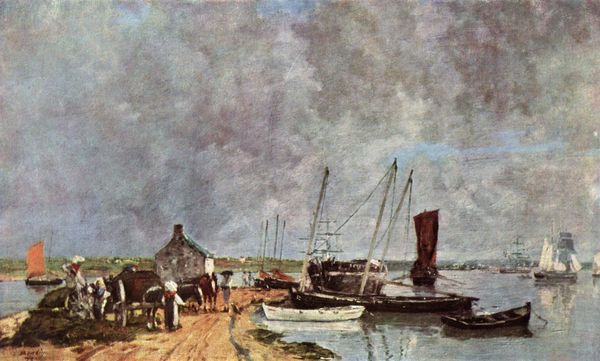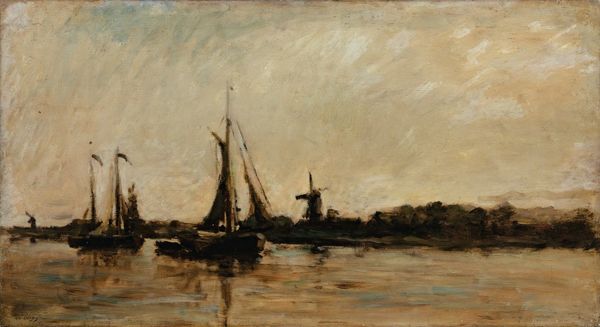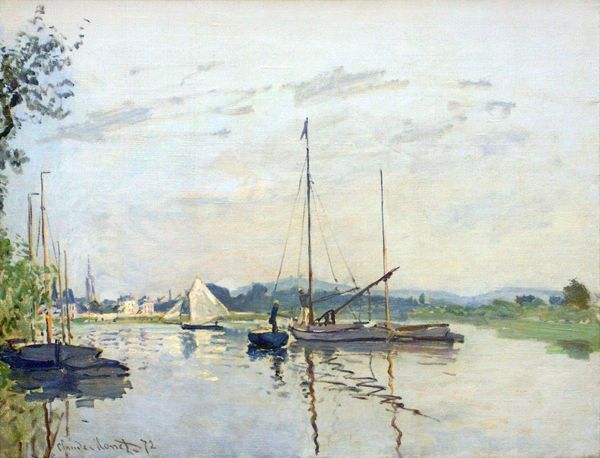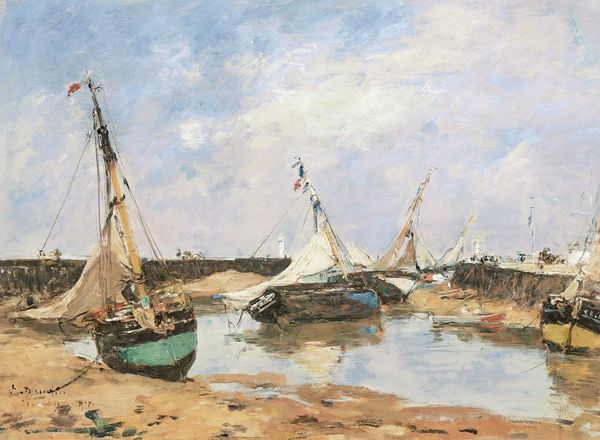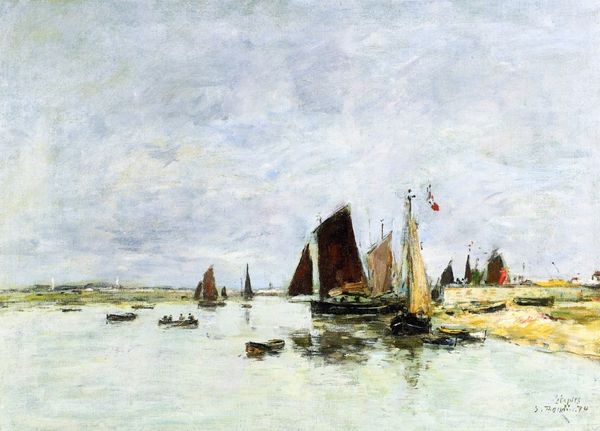
painting, oil-paint
#
painting
#
impressionism
#
oil-paint
#
landscape
#
oil painting
#
water
Copyright: Public domain
Curator: Standing before us is Claude Monet's "Boats at Zaandam," an oil painting created in 1871 during the artist's brief sojourn in the Netherlands. Editor: My first impression is one of gentle industry. The brushstrokes are so loose, yet they coalesce into a bustling waterfront scene. The materiality is immediately apparent. Curator: Precisely. It’s critical to see this work in the context of the Franco-Prussian War, from which Monet fled to find refuge. This painting provides evidence into how he reevaluated and reconstructed the meaning of what labor meant, and its place in Dutch society during that time. His flight shows how artists reacted to a growing sense of anxiety regarding labor conditions. Editor: Interesting. I'm drawn to the visible layering of paint; we see the artist grappling with the scene, trying to capture the reflections on the water. This feels immediate and truthful, not some romanticised view of labor, but rather a snapshot. Curator: It shows a community rebuilt. You can read a certain melancholy, perhaps reflecting on personal circumstances of his family in poverty while seeking refuge in a foreign city. Yet, despite the dire circumstances, this canvas exudes vibrant colors of a Dutch harbor city in that period. What were the different socioeconomic contexts impacting a French immigrant during that era in time? Editor: And note how the boats themselves are rendered! With a keen sense of their materials; the rough, stained canvas of their sails, the wood of the hull catching the light. I think Monet understands not just how light interacts with these boats but something about their purpose, as material objects of labor. Curator: And it’s essential to connect this to broader narratives: post-revolution disillusionment, emerging capitalism, displacement following political events. The impressionistic approach becomes a method for capturing not just light, but fleeting, precarious moments in history. Editor: This conversation emphasizes why the study of materials remains important today. From examining pigments, the canvas, to appreciating its production, and engaging with broader understanding of its material circumstances. Curator: It serves as a lens through which we understand socio-political shifts and their repercussions across society and artistic expression. Editor: Indeed. Examining art from the perspective of material production reveals insights of our own complex world and our relation to these themes still present today.
Comments
No comments
Be the first to comment and join the conversation on the ultimate creative platform.
